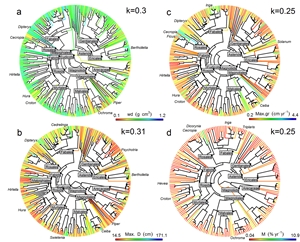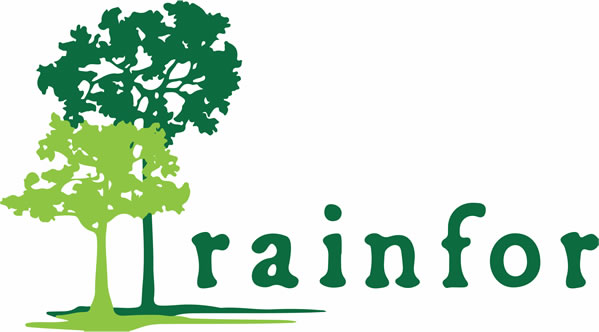It is expected that sister lineages will be more similar to each other simply because they diverged more recently from a common ancestor. However, during evolution many other processes have been acting and driving to different extents of similarity among closely related lineages. So, rather than being purely assumed, the tendency of sister lineages having more similar ecological characteristics needs to be tested.
Previous studies investigating the strength of similarity among related species have found contrasting results for different ecological characteristics. More recently, in a study led by Fernanda Coelho de Souza a Brazilian PhD student at Leeds University, the team of 77 scientists from all Amazonian countries investigated the extent of similarity on ecological characteristics. The authors looked at ecological characteristics related to the main axis of life-history variation and tightly linked with trees ability to process and store carbon: potential tree size, wood density, growth and mortality rates.

By using 577 inventory plots from the RAINFOR network and a recently published DNA base phylogeny the team found that despite the role played by selection on determining ecological traits, sister lineages tend to have more similar ecological characteristics than expected by chance. This result provides a foundation for understanding how evolutionary relationships relate to ecosystem structure and function and potentially predicting the impact of species loss on the global carbon cycle. Moreover, because only a small proportion of tree species have trait data available at large scales, evolutionary relationships among species provides an important proxy where trait data is not available.
For more information: Coelho de Souza et. al. (2016) Evolutionary heritage influences Amazon tree ecology Proceedings of the Royal Society B DOI: 10.1098/rspb.2016.1587
